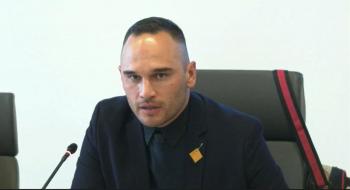Image Caption
Summary
Local Journalism Initiative Reporter
Windspeaker.com
Ground penetrating radar and magnetometry have uncovered a potential 93 burial sites on 14 hectares of the former St. Joseph’s Mission site in British Columbia.
The residential school, since torn down, is part of an initial investigation area that has seen ongoing work undertaken by Sugar Cane Archeology, a wholly owned First Nations company, and GeoScan, a leader in ground penetrating radar.
Work began last August spurred on by the uncovering of 215 burial sites at the former Kamloops Indian Residential school a few months earlier.
The findings, said Kukwpi7 Willie Sellars in a news conference this afternoon, are only preliminary. There is still 470 hectares of land in the San Jose river valley to be included in phase one.
The area that was examined was narrowed down because of the stories of former residential school students and archival and photographic research, said Whitney Spearing, project lead of the St. Joseph’s Mission investigation.
“Survivor interviews are … key pieces of first-hand evidence which support the claims of deaths and disappearances of Indigenous students from St. Joseph’s mission. These interviews have been instrumental in determining specific target areas for geophysical work within a very large search area,” said Spearing.
Spearing said the first phase of the investigation was expanded based on initial survivor interviews and archival materials and that there was a “strong possibility” of additional expansion.
The entire area that is part of the phase one investigation includes the mission, the accompanying Onward Ranch, the Canadian National Railway right-of-way, and additional agricultural property.
St. Joseph’s Mission contains a historic cemetery, occasionally used in modern times, and definitely in use during the operation of the residential school.
“Current data suggests that 50 of the potential 93 sites are not associated with the cemetery,” said Spearing.
She stressed that only excavation can determine whether human remains are present in these potential sites.
However, Sellars noted that even after geophysical and archival work is complete, not every missing child would be accounted for.
“That is very scary and disturbing. Their bodies were cast into the river, left at the bottom of lakes, tossed like garbage into incinerators. For those children there will be no headstones, no unmarked graves, no small fragment of bone to be forensically analyzed. For those families there will be no closure. It is for those children and families we grieve the most,” said an emotional Sellars.
In the morning prior to the press conference, Sellars met with chiefs of the other First Nations who had their children sent to the mission school. The residential school operated from 1891 to 1981 with thousands of First Nations children attending from all over, including Nuxalk from Bella Coola, Dakelh from Anahim Lake, Tsilhqot’in from Tl’etinqox, ?Esdilagh, Yunesit’in, Xeni Gwet’in and Tl’esqox and Northern Secwépemc from Xatśūll Cmetem, Stswēceḿc Xgāt’tem, Tsq’ēsceń and T’ēxelc.
Both Assembly of First Nation National Chief RoseAnne Archibald and AFN BC Regional Chief Terry Teegee participated in the morning meeting.
The Zoom press conference saw federal Crown-Indigenous Relations Minister Marc Miller and BC Indigenous Relations and Reconciliation Minister Murray Rankin in attendance.
Moving forward, Sellars said although Williams Lake had been leading the technical exercise and investigation, multiple nations had been impacted by the legacy of St. Joseph’s Mission. He said Williams Lake First Nation was looking forward to working collaboratively with those nations.
“They have questions and they have concerns and holding up the survivors and holding up those ancestors and leading with ceremony is of utmost importance at WLFN,” he said.
He also said discussions would begin immediately with Canada and the province about protective measures and preservation of the site. There would be 24/7 security patrols and additional security measures undertaken.
Spearing said there was still much work to be undertaken within phase one of the investigation. (This article may have triggered strong emotions. If you are having difficulties in dealing with these thoughts and feelings and are in need of support, call the Indian Residential Schools Survivors (National):1-800-721-0066; Indian Residential School Survivors and Family Crisis Line (National): 1-866-925-4419; First Nation Health Authority (BC): 1-855-344-3800; BC Interior Crisis Line: 1-888-353-2273; Tsow Tun Le Lum: 1-888-403-3123.)
Local Journalism Initiative Reporters are supported by a financial contribution made by the Government of Canada.

